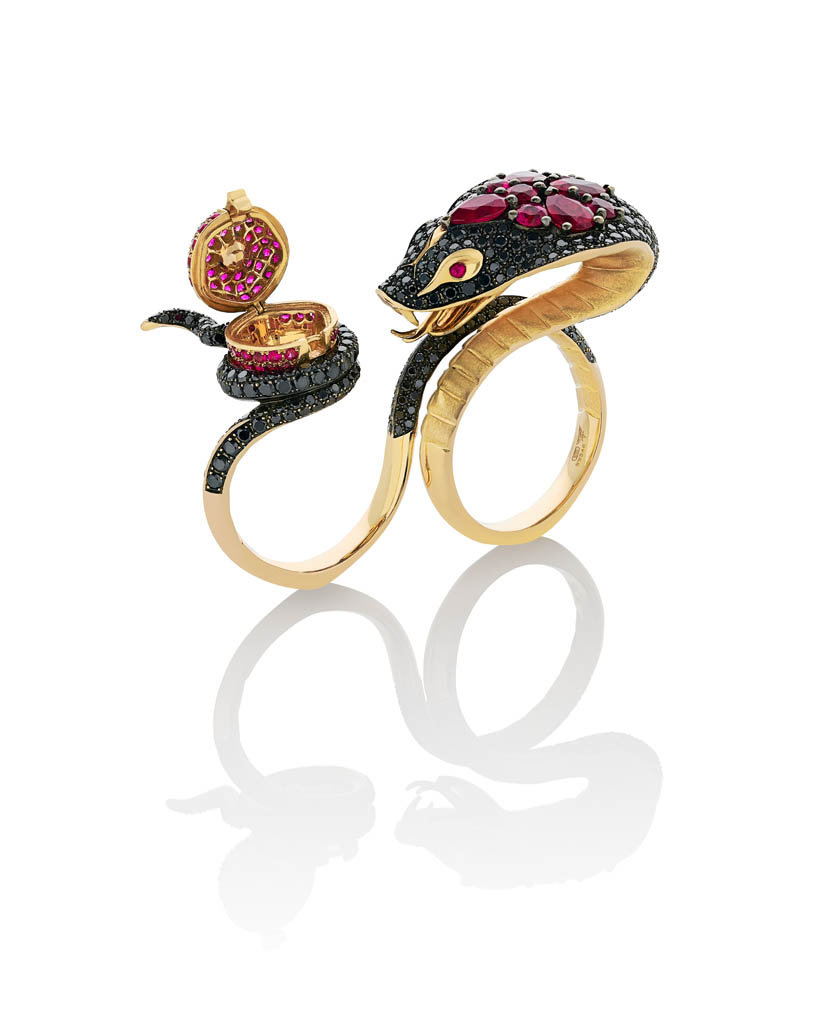
“I’ll paint you moments of gold, I’ll spin you Valentine evenings.” — DAVID BOWIE
VENÜ: How did you define yourself as an artist or jewelry designer?
SW: As a jeweler.
VENÜ: What part of the design process is authentic to you, and what do you distinguish as a human luxury?
SW: Well, when we speak about being authentic to our process, I usually begin with a story. I don’t start with a spectacle that doesn’t have a basis or a narrative that I can refer to. On many occasions, my team has expressed that if I don’t provide them with a recount of the vision, they will feel lost in what we need to achieve. The long and short of it is that I don’t just pull something from thin air. I’ve got to have a feeling of what I’m effectuating. I suppose the greatest pleasure of being a jeweler is knowing my pieces start a conversation. You see, it’s a personal never-ending dialogue that gets discussed around my clients. I love that people find something in my pieces that demonstrates a point of connection and provokes a conversational exchange at a dinner party or pillow talk between couples. People want to know about the process, the story behind it, and why something exists, they want to know more about its origins, the sustainability of its materials, and where it comes from? I think that when you’re readily able to converse this way, it results in a considerable advantage in a world full of products. I would hate to make jewelry that was just about the parts. “What’s the clarity of the diamond? What is the carat weight?” OMG, I would have given up years ago. I feel that’s where authenticity lies.
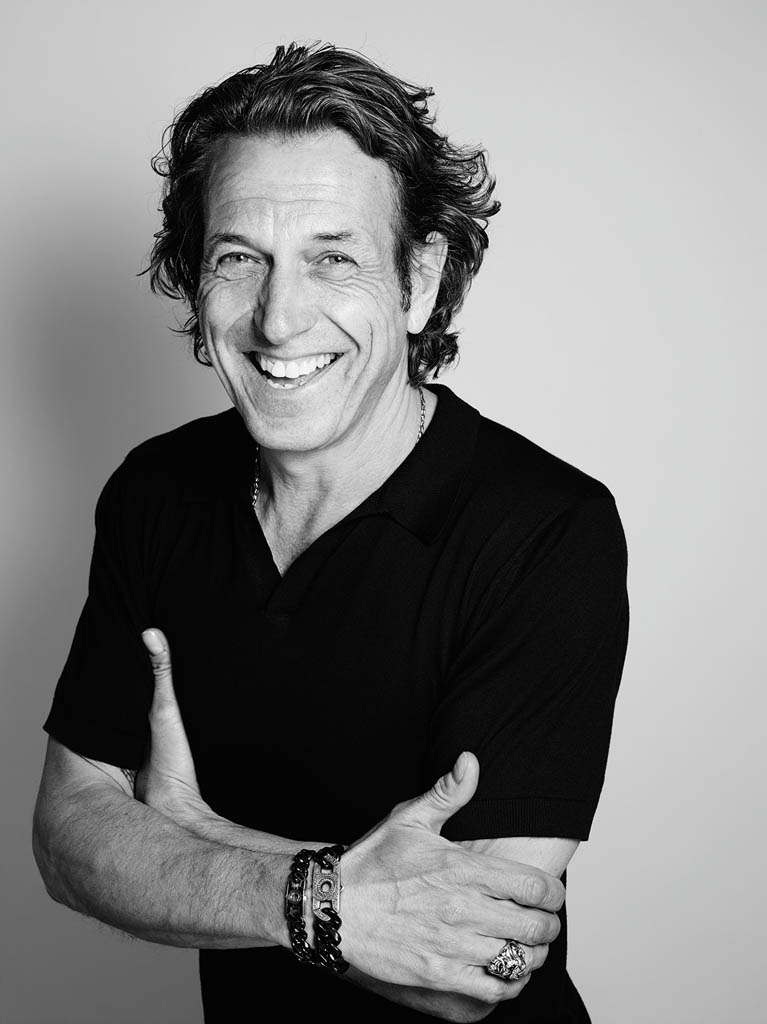
Stephen Webster – photo by Rankin
SW: To answer your question about what luxury is … Spending a weekend in my garden. I don’t think luxury is necessarily tangible. It certainly gives you pleasure and is rarified in some way. We all live very hectic lives. In the last month, I’ve traveled to several countries as a jeweler. I love it; it’s what I do, it’s exhausting! It’s the simplicity of being in my garden and being with my family that I don’t get to do when I’m on the road. But then again, I also value material things when it’s something I feel connected to.
VENÜ: Speaking about sustainability, I’d like to hear more about your point of view and environmental concerns. You’re a bit of an environmentalist and activist. How did this come about?
SW: I feel that it has been a very long journey. As an industry, we rely on things initially coming from the ground. Take gold or silver, for instance; even platinum; at its core, it comes from the ground. Gemstones, the same, and so on. From an environmental standpoint and my general perspective of the industry, we shouldn’t do any of it. I realized that I should know more about the materials I use daily. The industry became aware that there was currency in conflict and trade policy. This was before the movie Blood Diamonds. You might say its been going on longer than the last twenty years we’ve heard about. When I became aware of the atrocities of the child soldiers recruited for the Angolan civil war for the sake of diamonds, I was horrified to understand what I was supporting and contributing to by being a jeweler. In those days, there were not many places you could turn to for advice. The first thing I did was join Amnesty International. “They gave you the lowdown on the criminal responsibilities and the complexities of human trafficking. I said to myself that there must be another way.” This is what initiated my exploration and research of the materials. This was also when the industry had to get with The Kimberley Process (KP) and commit to removing conflict diamonds from the global supply chain.
SW: Nonetheless, it didn’t speak about the impacts of mining. Gold became my big thing as it was the one material, I used every day. I started to investigate ways you could utilize gold less harmfully. In a nutshell, I connected with a group called Solidaridad which has exponentially grown into an international network organization whose ecosophy is to make sustainability the norm throughout the global supply chain, educate and enable farmers and workers to earn a decent income, and harmonize with the balance of nature. They were the forerunner in the interests of gold fair trade. My curiosity got the better of me, and I went to Peru with them and literally saw barren wastelands in the mountains where miners of artisanal gold were using the most prehistoric and unfathomable practices to support their families and existing on a dollar a day, not to mention the life-threatening impact of using mercury. It was an emotional awakening for me. At the time, the group was making headway in the villages. Everyone asked me in Spanish, “What is a jeweler doing in our mine?” The guide from Solidaridad would tell them, and I shook their hands. It was an extraordinary experience. When I returned to London, The Guardian did an article on it as it was quite unusual. I spoke at Basel about my experience, and I was criticized for discussing the supply chain and the knowledge I gained. Fast forward, vital questions about seeking better alternatives have stuck with me within my practice. When I think something isn’t right, I avoid it.
SW: If I can help someone make a change, I will. Not to imply in an NGO way, as that’s bigger than I can be, but with my suppliers, I help them look at other choices. At first, there was reluctance because it meant change. Now, people want to know how we can be better? If you can’t answer basic questions about your business practices, you haven’t got very long to stay in business. Something that was somewhat disruptive is now a great business move. I just came downstairs from a packaging meeting to do this interview with you. We discussed how packaging can be more sustainable and still feel luxurious?
VENÜ: Most people use the term sustainable loosely. I don’t even like the word anymore.
SW: I concur. I read an article a couple of days ago on a woman who runs an influential business, and she said, “That with all the words that abound us, transparency, has become my big hate word.” I think it’s because of what you said. It’s so easy to say we’re offering more transparency. What exactly does that mean?
VENÜ: I see that you’re heavily influenced and attracted by the musical genre of Rock and Roll as it permeates within your collections. What artists have inspired you?
SW: I can go back to why I attended art school. You go to art school and meet people that are creatively different and take up fine art, this, and that, and then you meet and form a band. Although I didn’t want to be in a band, I was 15 when I left high school and went to art school to become a fashion designer. I really liked fashion, and I could draw. I very quickly discovered the bigger world of art school. The craft of jewelry-making looked more interesting to me than fashion. It wasn’t about design, but the skill and focus required to be a jewelry designer. We were young and didn’t have precious materials, and in a grubby way, we would put together what felt like treasure.
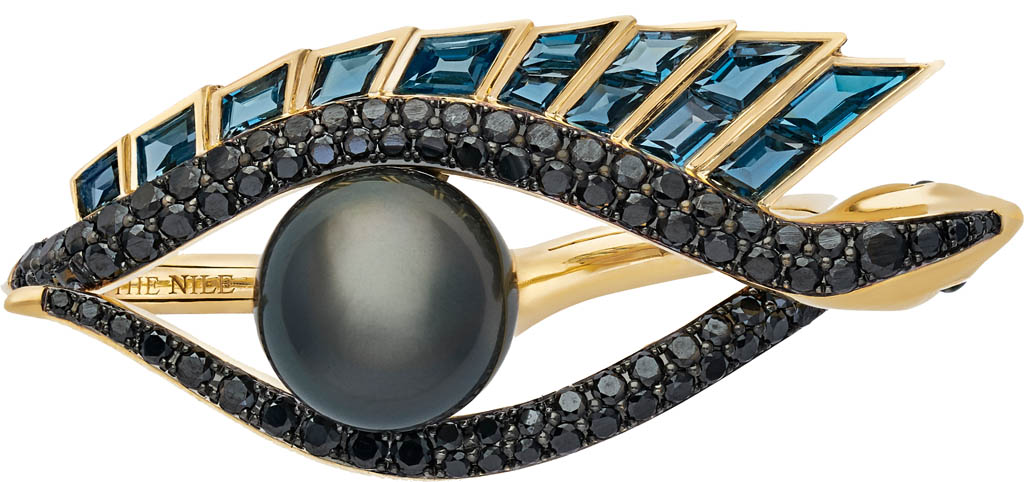
LOVE on the NILE
By the time you finished polishing and finishing, you felt like you had something. I was obsessed! My tutor, a dear friend, expressed that my enthusiasm was contagious. The year was 1976 – my gifted infatuation for jewelry design collided with my love of music and the punk scene. I spent my weekends on King’s Road. ‘Let it Rock’ was one of the first Vivienne Westwood and Malcolm McLaren shops. I met my friends who were in the Sex Pistols and The Clash. David Bowie and Roxy Music are some of my musical heroes. I also embraced Dancehall Reggae which is an early adoption of Jamaican Reggae. I’ve got a massive vinyl collection of records. They’re not all old. I still buy records.
VENÜ: There’s nothing better than hearing the needle on the record.
SW: Ironically enough, both of my daughters are in high demand with gigs, bar and bat mitzvahs, weddings, birthday parties, etc. It’s funny as it started as a hobby during COVID, and we’d broadcast it from our kitchen. During Christmas last year, my family and I vacationed in Jamaica, and my daughters brought their boyfriends. We all love that type of scene. I guess it’s in the blood!
VENÜ: We’d like to hear more about your COCKTALES book – A HEDONISTIC HISTORY OF THE RIGHT-HAND RING. There’s a juxtaposition about how you marinate the fragility of the pieces and the strength of the women your rings are inspired by.
SW: I’m not only married to a woman of conviction, but every senior position within my company is a woman – I predominantly ended up this way. When I joined the industry in the 70s, the workshop was catered to men. It soon became evident that a new jeweler was in town and had a uniquely feminine approach. Let’s just say I never thought along the lines of gender; I leaned toward the aesthetic. For 15 years, I was either training or working for other people. I needed to express myself, and in 1990 Stephen Webster was born. I wanted to make jewelry that I would wear and what I’d like to see others wearing. Suddenly, I was selling jewelry to women. I was also selling jewelry to men, but they were novices in comparison. Women wanted something that felt edgy, provocative, and seductive – Rock and Roll. This was when 95% of jewelry was sold to women – gifts and engagements. At Bergdorf Goodman, I remember the sales associates saying, “It’s amazing that your clients are all the people who wear your jewelry.” I mean, if someone wants their jewelry statement to serve as a back seat, they’re not my client.
“Women know what they like. You start to pick up a woman’s essence of who she is, the idea of what she wants, what she wears, and what she can get away with.”
VENÜ: How did you choose the woman in your book, the jewelry pieces, and the mixology that went with the collection?
SW: There are two things here. – The idea of the cocktail ring has been with me since 1983, when I designed a ring for Elizabeth Taylor. Talk about strong women. I loved the idea because it was a ring to enjoy. Women purchase my rings because they don’t come with a man, a commitment, or a baby. For a woman to wear a ring on her right hand sent a big message, like during the prohibition movement when you went to speakeasies. I wanted to tell the story of the cocktail ring, and I thought the marination of both was a perfect pairing. A little secretive- a little daring. I was so taken with the idea that we opened the NO REGRETS LOUNGE in Nashville, Tennessee. What could be better than jewelry, music, and old-fashioned martinis?
Screaming Blue Murder
LADY MACBETH
- 1 lime wedge
- Coarse or granulated sugar
- Ice Cubes
- ¼ cup cranberry juice
- 1 oz Crystal Head vodka
- 1 oz blue curacao
Moisten rim of chilled martini glass with lime wedge.
Sprinkle sugar onto a small plate, and dip moistened rim into the
sugar to coat lightly.
Fill cocktail shaker with ice, add cranberry juice, vodka, curacao
and lime juice; cover and shake.
Strain into martini glass.


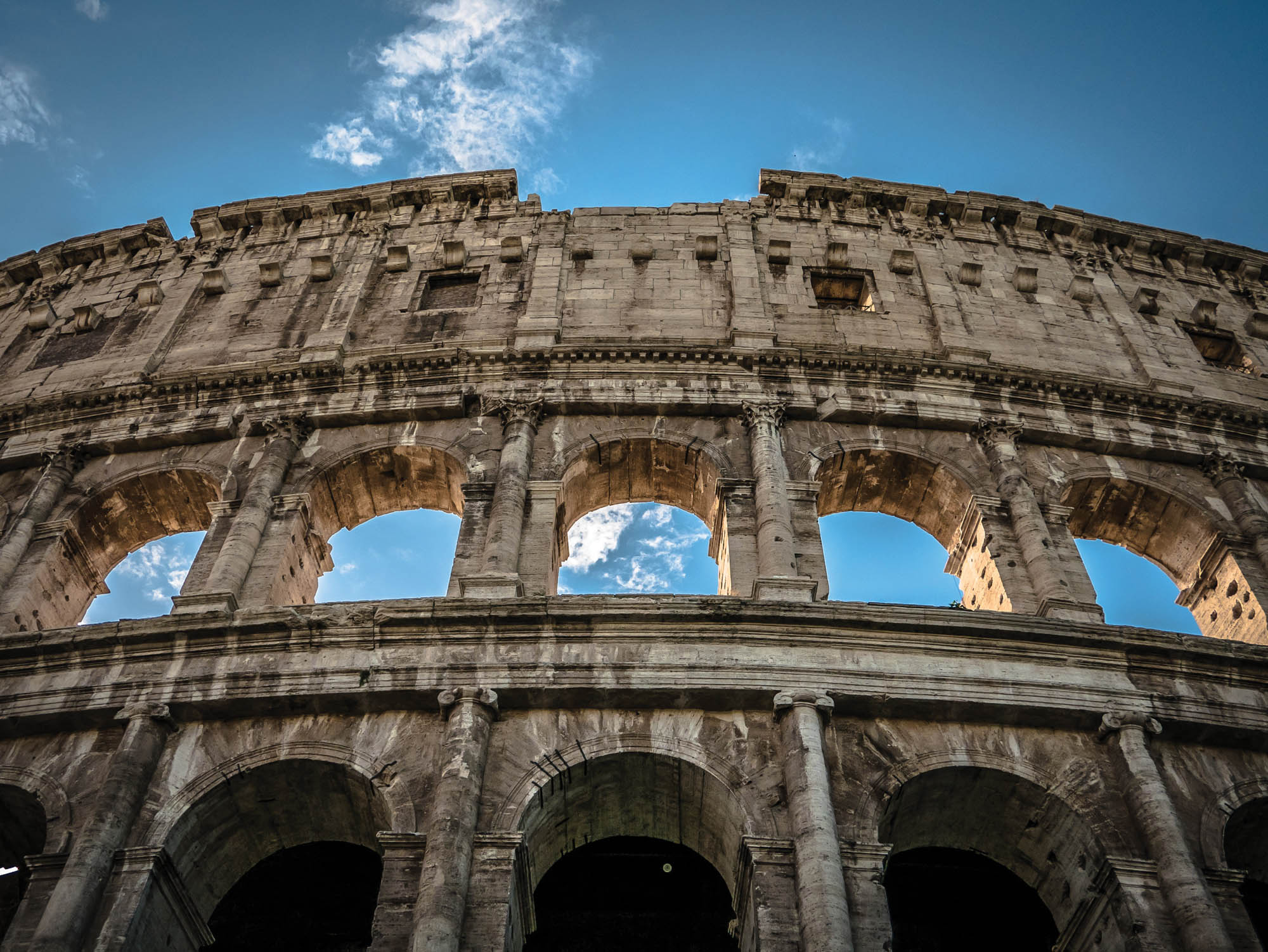
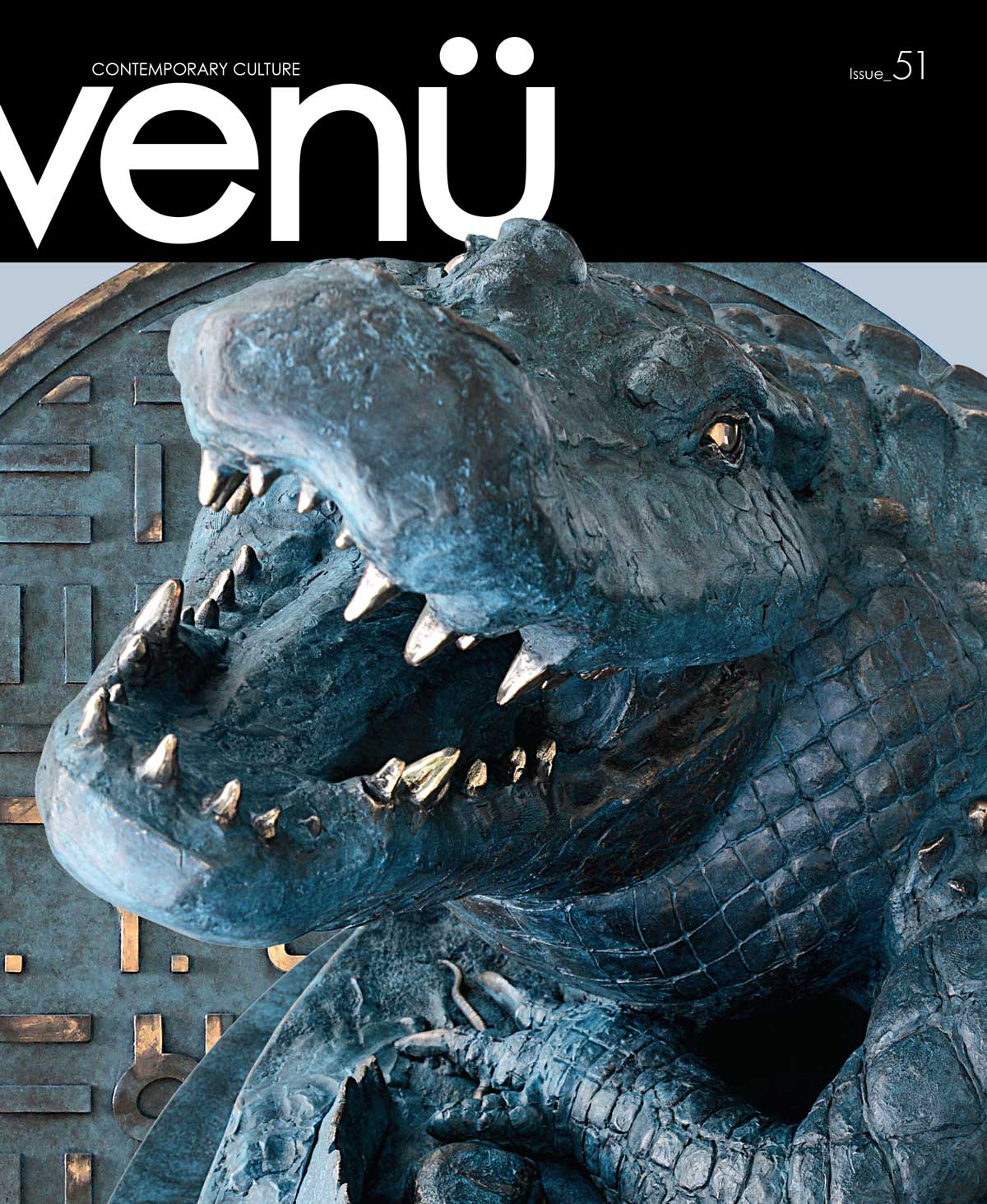
Leave a Reply